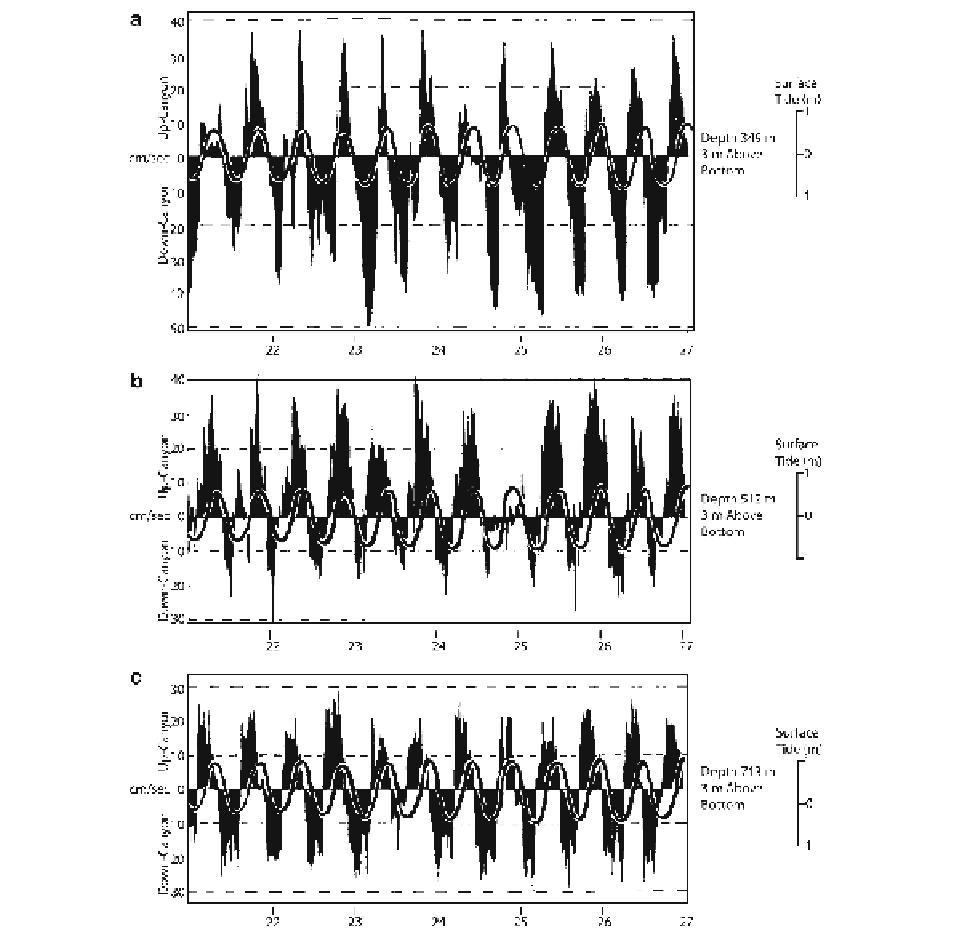Geology Reference
In-Depth Information
Fig. 14.4
Current velocity vs time records for Hydrographer
Canyon, New England, US, at different depths. The surface tidal
predictions are shown by the smooth curve. Notice that although
the currents in the canyon match the frequency of the surface
tide, they are all slightly out of phase with both the surface tide,
and with each other, which may have to do with either how
the internal tide is advancing (up or down the canyon, or along
the slope), or how the internal tide is being generated - i.e. at the
same or different depths (Fig.
14.3
) (Modifi ed from Shepard
et al.
1979
)
of tidal constituents, just as in surface tides (Kvale
2006
). It is also possible there is an effect of sampling
bias due to the position of current meters, generally
suspended at least a few meters off the seafl oor, such
that if the height of the tidal wave varies during a tidal
cycle, and between cycles, then the part of the tidal
wave impacting the current meter may differ from
cycle to cycle (and even within cycles), and, depending
on the geometry of the internal tidal waves, this will
affect the local velocity of the current (see Fig.
14.3
).
The current direction of any given internal tide may
also change in orientation during a tidal cycle, com-
monly progressing consistently either clockwise or
anticlockwise during the cycle (Shepard et al.
1979
) ,
probably as a function of the orientation of the
seafl oor slope relative to the propagation direction of

